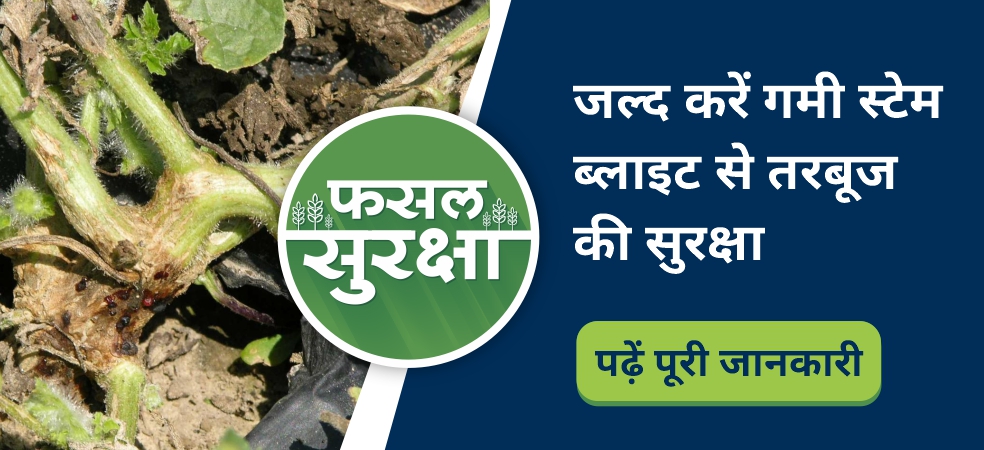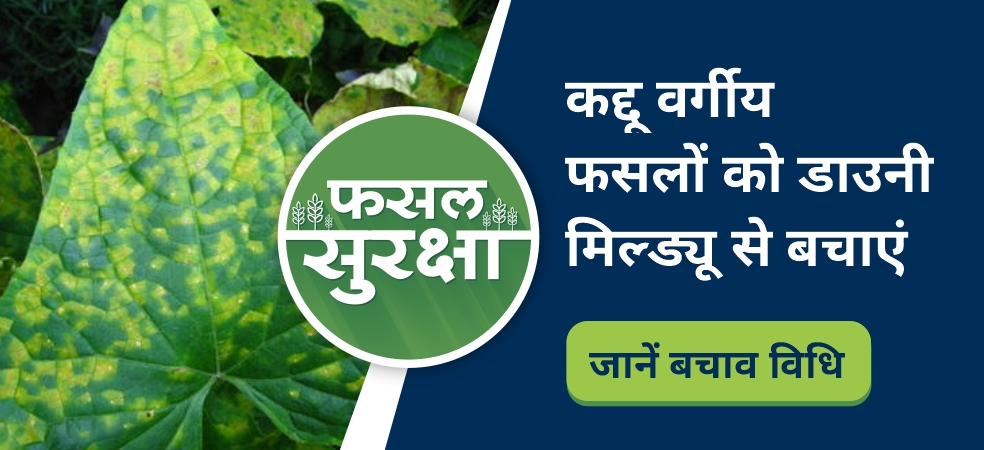-
Watermelon is a more water-consuming crop, but water logging is harmful. Overwatering at the bottom of the plant can lead to root rot and fruit rot.
-
Watermelon is cultivated especially in the Zaid season, so the interval of irrigation is very important in this.
-
Watermelon should be irrigated mainly at an interval of 3-5 days, that is, sufficient moisture should be maintained in the soil.
-
Soil moisture stress during the pre-flowering, flowering, and fruit development stage drastically reduce the yield.
-
Irrigation should be stopped during ripening as it adversely affects fruit quality and promotes fruit cracking.
ShareWith the sowing of the crop, connect your farm with the My Farm section of Gramophone app and keep on getting the exact advice and solutions related to smart agriculture throughout the crop cycle. Share this article with your friends with the share button below.










